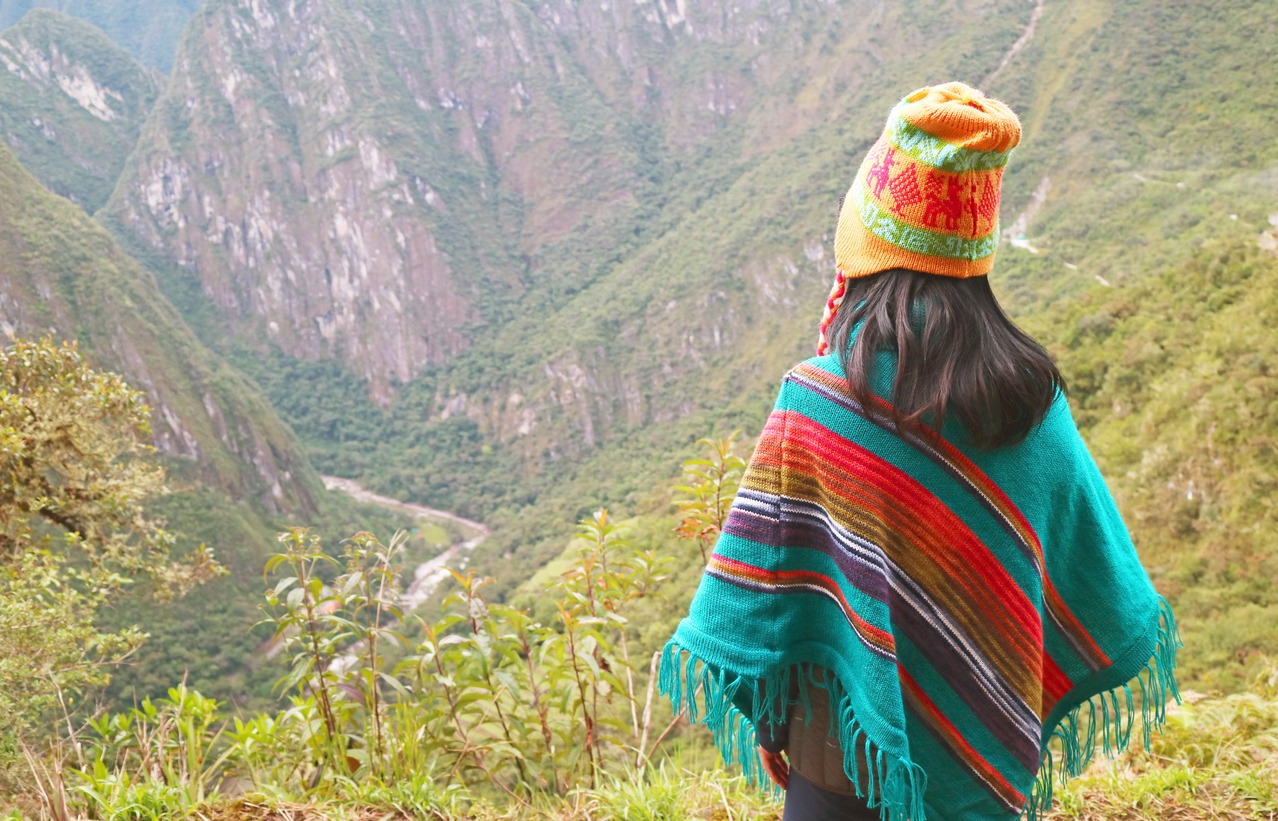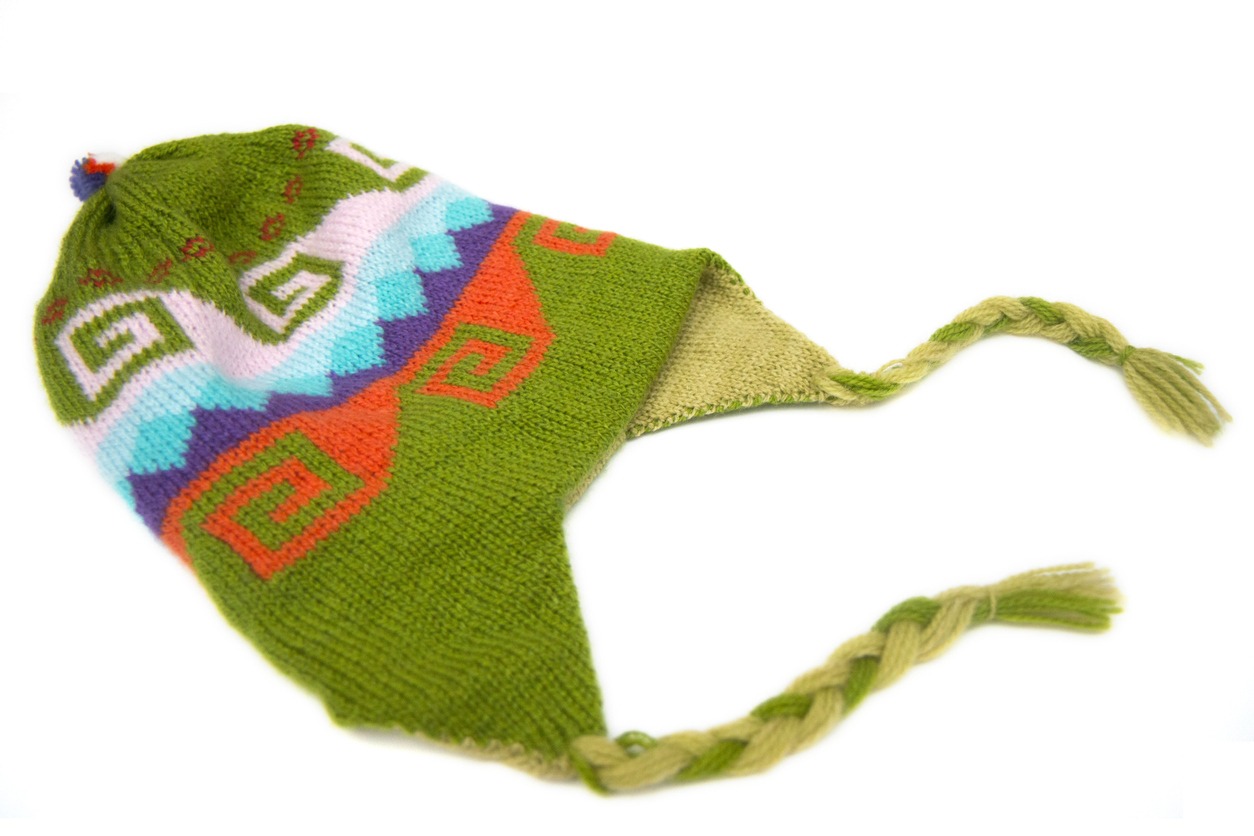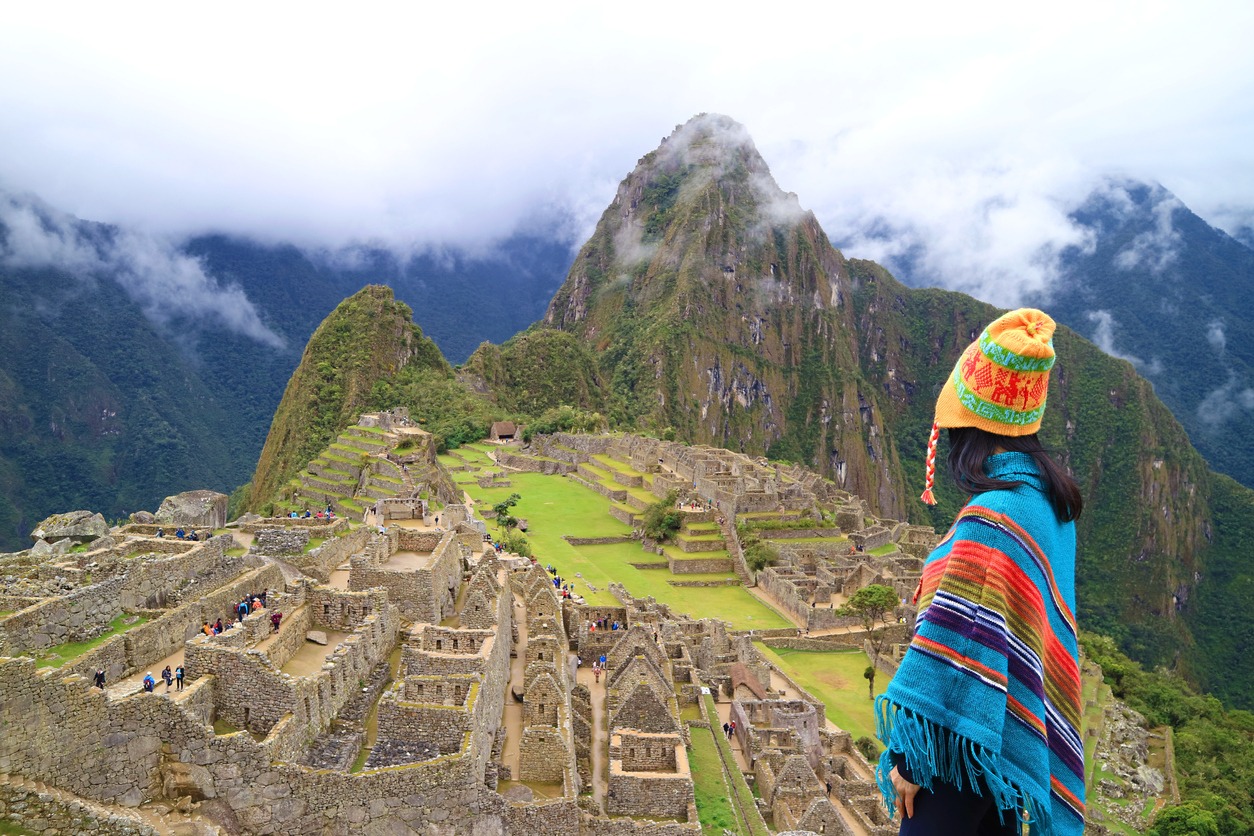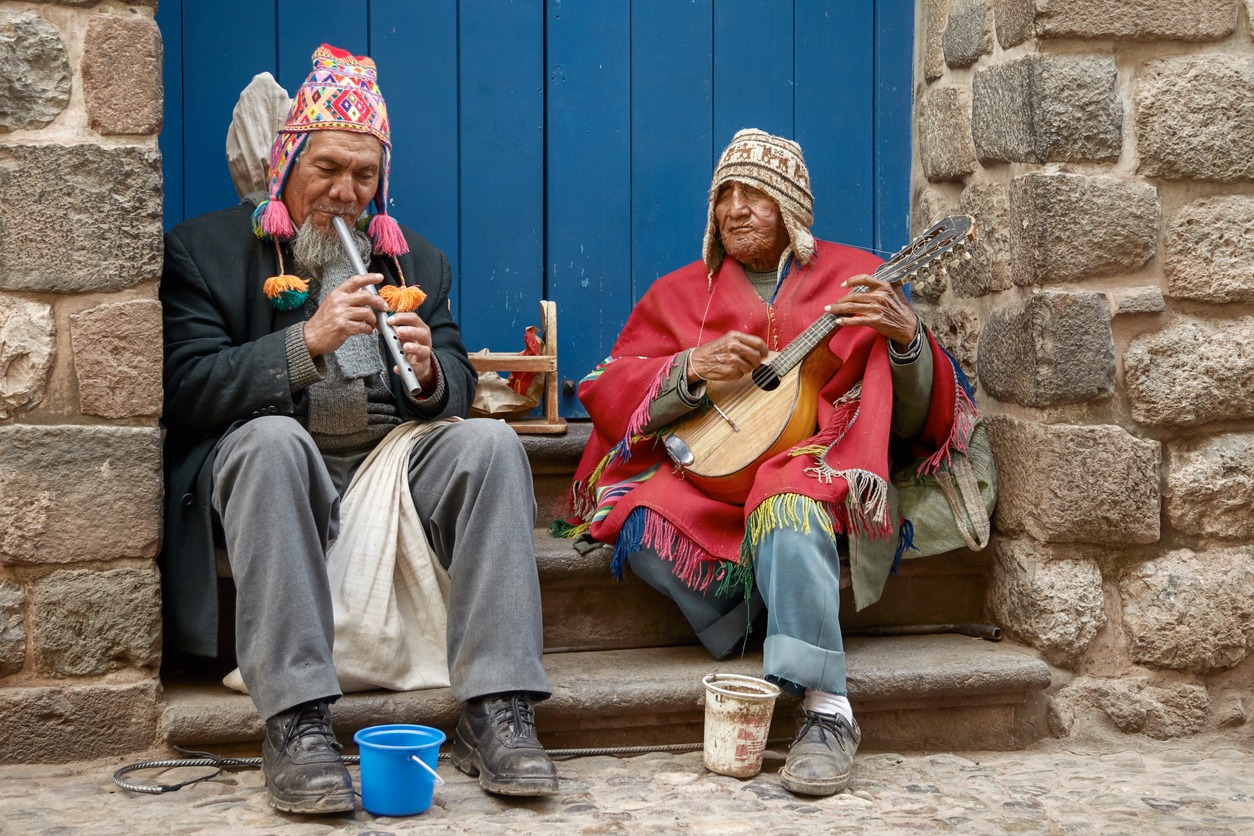Located in the heart of South America, Peru is a land brimming with vibrant traditions and rich cultural heritage. Among its many treasures is the chullo hat, an iconic symbol of Peruvian identity. These colorful woolen hats, known for their distinctive earflaps and intricate patterns, have been a staple in the Peruvian highlands for centuries. Aside from keeping people warm, they are also stories of culture, community, and artistry woven into every stitch.
The chullo hat offers a glimpse into the soul of Peruvian life. Its origins, deeply rooted in the history of the Andean people, reflect the harmony between the harsh mountain environment and the need for self-expression. Each hat, handcrafted with skill and care, is a testament to the enduring spirit of the artisans who make them. In this blog, we will discuss the story behind these enchanting hats, exploring their historical significance, cultural symbolism, and their evolving role in modern Peruvian society.
Historical Background of Chullo Hats
The chullo hat has its roots deep in the Andean mountains, an area known for its harsh climates and rugged terrain. These hats emerged as a practical solution for the indigenous people to protect themselves from the biting cold. The exact origins are hard to pinpoint, but their existence is intertwined with the rich tapestry of Andean culture that predates even the Inca civilization. Initially, chullo hats were more than just headwear; they were symbols of status and community identity, each pattern and color signifying a connection to a particular village or tribe.
The Inca Influence
With the rise of the Inca Empire, the chullo hat witnessed a transformation. The Incas, renowned for their advancements in textiles, infused their sophisticated weaving techniques into the making of these hats. This period saw the introduction of more intricate designs and the use of finer materials like alpaca and llama wool.
The chullo hat became a canvas for artistic expression, reflecting the wearer’s social status and personal stories. The Incas’ contribution to the evolution of the chullo hat was significant, embedding it further into the cultural fabric of the Andean people.
Post-Inca Era and Spanish Influence
The arrival of the Spanish in the 16th century brought new materials and influences to Peruvian textiles. The chullo hat adapted to these changes, incorporating new styles and designs. Despite the cultural upheaval during the colonial period, the indigenous populations retained the chullo as a key element of their attire. It served as a subtle form of resistance, a way for the Andean people to hold onto their heritage and identity in the face of foreign domination.
Preservation and Evolution
Over the centuries, the chullo hat has endured as a symbol of Peruvian heritage. While the basic form has remained consistent, each generation has added its touch, allowing the chullo to evolve while maintaining its historical roots. Today, these hats are not only a nod to the past but also a living tradition, continuously being reinterpreted by artisans across the Andes. As we move forward, the chullo hat stands as a testament to the resilience and creativity of the Peruvian people, a bridge between the ancient and the modern.
Design and Craftsmanship
The design of the chullo hat is as unique as its history, characterized by several distinctive features:
- Earflaps: Essential for protection against the cold wind in the high Andes, these are perhaps the most recognizable features.
- Tassels and Pom-poms: Often adorned with colorful tassels or pom-poms, adding a playful element to the design.
- Geometric Patterns: Intricate geometric patterns are common, with each symbolizing different aspects of Andean cosmology and daily life.
- Vibrant Colors: The use of bright, lively colors is a hallmark of the chullo hat, reflecting the vibrant culture of the Andean people.
Materials Used
The traditional material for chullo hats is as important as the design itself:
- Alpaca Wool: The most commonly used material, known for its warmth, softness, and durability.
- Llama Wool: Heavier than alpaca, it’s often used for more robust, everyday wear chullos.
- Sheep Wool: Occasionally used, especially in more commercially produced hats.
Crafting Process
The creation of a chullo hat is a labor of love, often involving the following steps:
- Shearing and Cleaning: Wool is sheared from the animals and thoroughly cleaned.
- Spinning: The clean wool is hand-spun into yarn using a spindle.
- Dyeing: The yarn is dyed using natural dyes from plants, minerals, and sometimes insects.
- Knitting: The dyed yarn is then intricately hand-knitted. This is where the artisan’s skill truly shines, as they incorporate traditional patterns and personal touches.
- Finishing Touches: Finally, embellishments like earflaps, tassels, and pom-poms are added.
Regional Variations
While the basic structure of the chullo hat is consistent, different regions in Peru have their unique variations:
- Cusco Region: Known for using bright, contrasting colors and intricate symbols.
- Puno Region: Often features more elaborate designs with detailed iconography.
- Huancavelica Region: Tends to have simpler designs, focusing on the texture and quality of the knit.
Modern Adaptations
In recent years, there has been a fusion of traditional techniques with modern design. This led to new patterns and designs that cater to modern fashion trends while respecting traditional craftsmanship. Aside from that, there’s also the incorporation of non-traditional colors and patterns influenced by global fashion trends.
The chullo hat, through its design and craftsmanship, is not just a piece of clothing but a living art form, embodying centuries of Andean tradition and the ever-evolving spirit of the Peruvian people.
Cultural Significance
The chullo hat is deeply intertwined with the identity of the Andean people. It’s a symbol of their rich heritage, reflecting their connection to their land and ancestors. Each region and community in the Andes has distinct patterns and styles, making the chullo a marker of one’s roots and familial lineage.
Role in Social and Ceremonial Events
In many Andean communities, chullo hats play a significant role in ceremonial events, from festivals to rites of passage. The specific designs and colors can signify different occasions or social statuses. Handmade chullos are often given as gifts, symbolizing respect, affection, and the transfer of cultural knowledge.
Storytelling Through Patterns
The intricate designs knitted into chullo hats often tell stories or symbolize elements of daily life, nature, and Andean cosmology. Many patterns are inspired by local legends and myths, serving as a means to preserve and pass down these stories through generations.
Influence on Peruvian Society
The chullo hat remains relevant in contemporary Peruvian society, symbolizing a fusion of tradition and modernity. It’s a source of national pride worn by Peruvians of all ages and backgrounds, especially during national celebrations and international events.
Economic and Artisanal Impact
The production of chullo hats provides a vital source of income for many artisans in rural Andean communities. The craft of making chullo hats is a cherished skill, often passed down through families, ensuring the continuation of this cultural art form.
Global Recognition and Challenges
The unique beauty of chullo hats has gained international recognition, making them popular items in global markets. As chullo hats gain popularity worldwide, there are increasing concerns about cultural appropriation and the importance of respecting the cultural context and craftsmanship behind them.
The chullo hat is much more than a piece of clothing; it’s a living emblem of Andean culture, rich in history and meaning. Its continued relevance and adaptation reflect the resilience and evolving identity of the Peruvian people, bridging past and present, local and global, tradition and innovation.
The Chullo Hat in Modern Times
The chullo hat has transcended its traditional boundaries and found a place in the global fashion industry. Designers have integrated its unique patterns and styles into contemporary fashion, showcasing them on international runways. Once primarily a rural accessory, the chullo is now a common sight in Peruvian cities, worn by the youth as a trendy fashion statement that also celebrates their heritage.
Economic Impacts and Artisan Support
The growing popularity of chullo hats has provided a significant economic boost to local artisans. Their skill in traditional knitting techniques has opened up new markets, both domestically and internationally. Various initiatives and organizations work to ensure that the artisans receive fair compensation for their work, helping to sustain their communities and preserve the art of chullo-making.
Challenges of Commercialization
With the increase in demand, there’s a challenge in maintaining the quality and authenticity of chullo hats. Mass-produced versions, often made with cheaper materials and less attention to detail, pose a threat to the traditional craft. The adaptation of chullo designs for a global market sometimes leads to a dilution of their cultural significance, raising concerns about the preservation of their original meaning and value.
Educational and Cultural Preservation Efforts
Many communities and organizations have started programs to teach younger generations the traditional art of chullo knitting, ensuring the craft’s survival. Festivals and cultural events often showcase the chullo hat, educating the public about its significance and promoting the appreciation of this traditional art form.
The Role of Technology and Social Media
The internet has opened up new avenues for artisans to sell their chullo hats, reaching a wider audience and allowing for the appreciation of authentic craftsmanship. Through social media, both the beauty and the cultural stories behind chullo hats are shared globally, raising awareness and appreciation for this aspect of Peruvian culture.
The chullo hat’s journey into modern times is a testament to its adaptability and the enduring appeal of its craftsmanship and cultural significance. As it navigates the challenges and opportunities of the global market, the chullo remains a cherished symbol of Peruvian heritage, continuing to evolve while staying rooted in its rich ancestral legacy.
Travel and Tourism
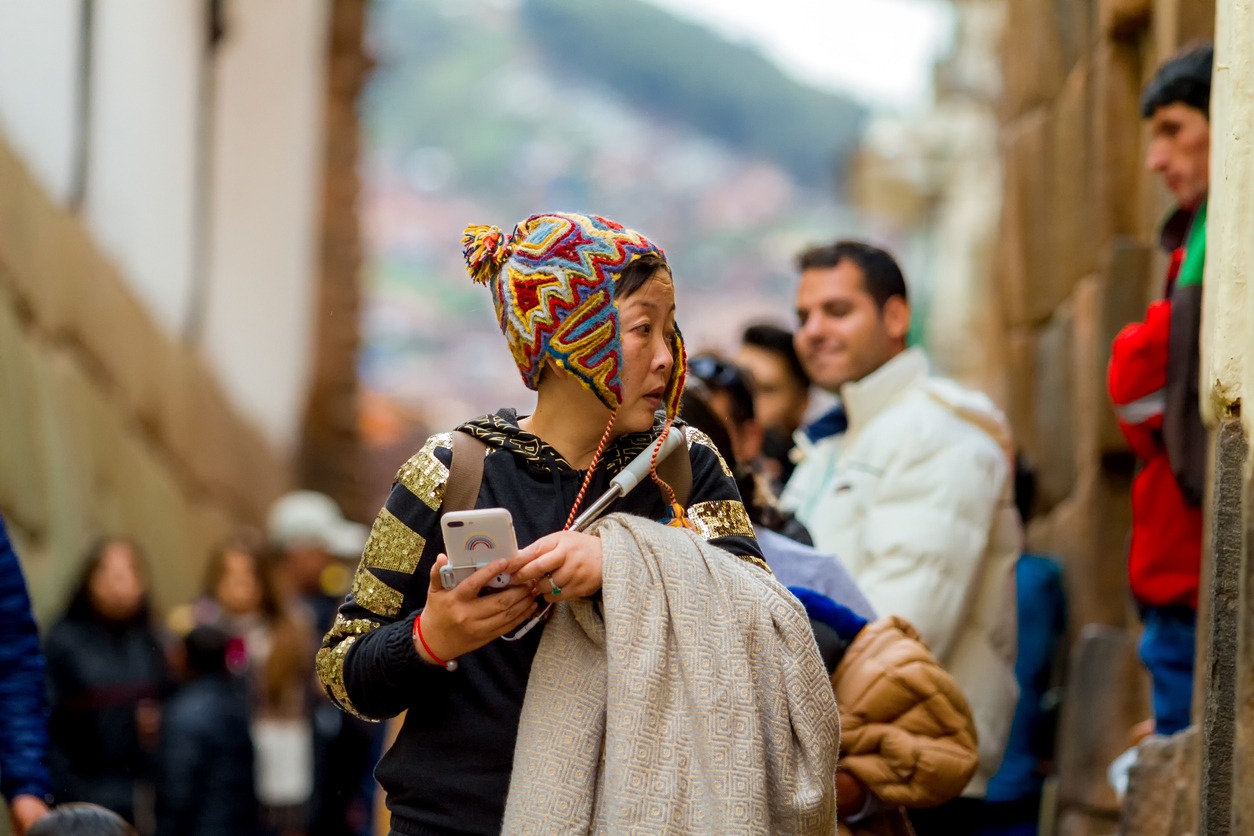
For tourists visiting Peru, chullo hats are a popular souvenir, offering a tangible piece of Peruvian culture to take home. Markets in tourist hotspots like Cusco, Lima, and Arequipa feature a wide array of chullo hats, drawing visitors with their vibrant colors and intricate designs.
Tourists are encouraged to seek out authentic chullo hats made by local artisans rather than mass-produced versions. This not only ensures higher quality but also supports the local economy and artisan communities. Many shops and cooperatives sell chullo hats under fair trade principles, ensuring artisans are fairly compensated and that practices are sustainable.
Educational Tours and Workshops
Specialized tours offer visitors an in-depth look at Peruvian textile traditions, including the making of chullo hats. These tours often include visits to artisan workshops and communities. Some local artisans offer workshops where tourists can learn the basics of knitting chullo hats, providing an immersive cultural experience.
Regional Variations and Exploration
Different regions of Peru have their unique styles of chullo hats. Travelers can explore these variations, understanding the diverse cultural landscape of Peru. Participating in or observing local festivals where chullo hats are worn gives tourists a deeper insight into their cultural importance.
The relationship between travel, tourism, and the chullo hat is a dynamic one, offering opportunities for cultural exchange, economic support, and education. As tourists seek authentic experiences and connections with local traditions, the chullo hat stands as a vibrant ambassador of Peruvian culture, weaving together stories of heritage and craftsmanship.
Conclusion
In summing up the story of Peru’s iconic chullo hats, it’s clear that these hats are far more than just a means of warmth or a fashion accessory. They represent a rich cultural history, a living art form that connects the past with the present. The chullo hat embodies the spirit of the Andean people, their resilience, and their creativity.
As this traditional craft continues to adapt and thrive in the modern world, it not only celebrates Peruvian heritage but also offers a bridge for cultural understanding. Whether through the skilled hands of local artisans, the bustling markets of Peru, or the international stages of fashion, the chullo hat continues to be a symbol of identity and pride for the Peruvian people, resonating with audiences far beyond its Andean origins.
